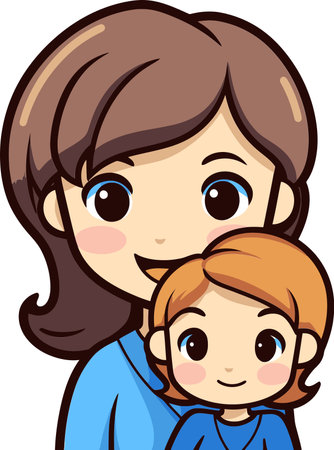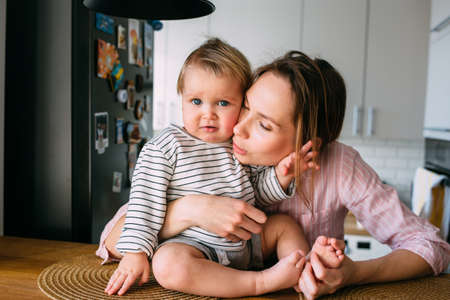Understanding the Importance of Baby Safety at Home
When welcoming a new baby into the family, ensuring their safety at home becomes an essential priority for everyone in the household. This is particularly true in the UK, where statistics from the Royal Society for the Prevention of Accidents (RoSPA) reveal that over 67,000 children are admitted to hospital each year due to accidents occurring in the home. Many of these incidents happen to children under five, often when older siblings or extended family members are present and involved in daily routines. British homes, with features such as steep staircases, open fireplaces, and easily accessible cleaning products, can pose unique risks to babies and toddlers. Therefore, educating older siblings and extended family about potential hazards is crucial to prevent slips, falls, burns, or accidental poisoning. By raising awareness and fostering a team approach to baby safety, families can create a supportive environment where everyone plays a vital role in protecting their newest member.
Common Household Hazards in UK Homes
When teaching older siblings and family members about baby safety at home, it’s crucial to recognise the typical hazards that are unique or especially common in British households. By identifying these dangers together, you help everyone become more aware and proactive in keeping the baby safe. Here are some key areas to focus on:
| Hazard | Where Its Found | What to Watch Out For |
|---|---|---|
| Staircases | Multi-level homes, especially Victorian terraces or semi-detached houses | No stair gates, loose carpets, toys left on steps, open banisters |
| Fireplaces & Wood Burners | Living rooms, especially in older or rural properties | Hot surfaces, accessible matches, sharp edges, lack of guards |
| Garden Equipment & Sheds | Back gardens and allotments | Unsecured tools, chemicals, ponds or water features without covers |
| Cupboards with Cleaning Products | Kitchens and utility rooms | No child locks, cleaning fluids within easy reach, tablets or pods mistaken for sweets |
| Windows & Balconies | Bedrooms and lounges in flats or upper floors of houses | No window restrictors, low sills, furniture placed under windows making them climbable |
| Cords & Blinds | Bedrooms and lounges throughout the house | Dangling cords from blinds and curtains which can be a strangulation risk |
| Small Objects & Choking Hazards | Toy boxes, living room floors, kitchen counters | Lego pieces, coins, batteries left where babies can reach them |
| Hot Drinks & Kettles | Kitchens and dining areas; tea is a staple in UK homes! | Mugs left on low tables, dangling kettle cords, boiling water near baby zones |
Family Safety Spotting Activity
Encourage a fun family activity where everyone – especially older siblings – walks through each room and tries to spot as many hazards as possible. Give everyone a simple checklist (like the table above) so they can tick off what they find. This not only raises awareness but also helps children feel involved in caring for their new sibling.
Top Tip:
Praise siblings when they notice a hazard or make a good suggestion for improving safety. This positive reinforcement helps them stay alert and take pride in being safety champions around the house.

3. Interactive Activities to Engage Older Siblings
Making baby safety education both fun and memorable for older siblings is key to helping them understand their important role in the family. In the UK, where hands-on learning is often encouraged, interactive activities and role play can transform a serious topic into an engaging experience that children will remember. Here are some practical ideas for parents and carers to try at home.
Safety Treasure Hunt
Organise a “Safety Treasure Hunt” around your home, asking older siblings to spot potential hazards such as small objects on the floor or unlocked cupboards. Use British items like coins, marbles, or plug socket covers to make it relatable. Reward successful finds with stickers or an extra bedtime story, reinforcing positive behaviour.
Role Play: Be the Safety Superhero
Encourage your older child to dress up as a ‘Safety Superhero’. Give them simple tasks like checking if the stair gate is closed or if toys are tidied away after playtime. This playful approach gives them ownership of their responsibilities and helps embed safe habits through repetition and praise.
Practice Calling for Help
Teach your older child how to respond in an emergency by practising how to call 999 (the UK emergency number). Role-play different scenarios, such as telling a grown-up if the baby puts something unsafe in their mouth or gets too close to stairs. Emphasise speaking calmly and knowing their address – vital skills for any British household.
Create a Family Safety Poster
Sit down together and create a colourful poster listing key safety rules for your home. Let your older child draw pictures or write slogans like “Keep small things away from baby” or “Always shut the garden gate.” Hang the poster somewhere visible as a daily reminder of everyone’s shared responsibility.
Through these interactive activities, older siblings not only learn about home baby safety but also feel valued as active participants in keeping their younger brother or sister safe. Making learning enjoyable ensures that important messages stick and encourages teamwork within your British family home.
4. Involving Grandparents and Extended Family in Safety Practices
Grandparents, aunts, and uncles play a cherished role in British family life, often providing hands-on help and sharing their wisdom. However, home baby safety recommendations have changed over the years, so it’s important to bridge generational gaps with kindness and understanding. Here are some tips tailored for engaging your extended family in creating a safe environment for your baby.
Start with Respectful Conversations
Begin by acknowledging their experience and showing appreciation for their support. Use phrases like, “I really value your help with the baby,” or “You’ve got so much experience—can we chat about some of the new safety guidelines together?” This approach makes everyone feel respected and involved.
Addressing Generational Differences
Safety advice has evolved since older relatives were raising children. For example, placing babies on their backs to sleep is now recommended, whereas previous generations might remember tummy sleeping. Bring up these changes gently—perhaps mention that “the NHS now suggests…” or “new research shows…” to provide context rather than criticism.
Common Baby Safety Topics: Old Advice vs New Guidance
| Topic | Traditional Advice | Current UK Guidance |
|---|---|---|
| Sleep Position | Tummy or side sleeping was common | Always put baby on their back to sleep (NHS) |
| Bottle Feeding | Propping bottles was sometimes done | Always hold baby when feeding; never prop bottles |
| Toys & Small Objects | Less awareness of choking hazards | No small objects within reach; check toys for age suitability (CE mark) |
| Car Seats | Babies sometimes held on laps in cars | Always use an approved car seat from birth (UK law) |
Promote Supportive Communication
If concerns arise, focus on working together rather than assigning blame. Say things like, “Let’s double-check the room together before playtime,” or “Would you mind helping us keep small items off the floor while baby is exploring?” Inviting participation fosters teamwork and avoids confrontation.
Quick Tips for Engaging Extended Family:
- Share official guidance: Print out or email NHS or RoSPA baby safety leaflets for easy reference.
- Create a checklist: Work together to make a home safety checklist—tick it off before visits!
- Demonstrate together: Show how to fit stair gates or use cupboard locks so everyone feels confident.
- Acknowledge traditions: Celebrate family customs while gently updating safety practices as needed.
- Encourage open dialogue: Let relatives ask questions and share their own suggestions.
This positive, collaborative approach ensures all generations can confidently support home baby safety while feeling included and respected—a truly British way to care for your littlest family member.
5. Creating Family Safety Agreements
Encouraging the whole family to work together in creating safety agreements is a wonderful way to foster responsibility and teamwork. In many UK households, involving older siblings and relatives in setting out house rules or a baby safety checklist not only raises awareness but also gives everyone a voice in keeping the baby safe. Gather your family for a safety meeting—perhaps over tea and biscuits—and discuss common risks, from stair gates to hot drink hazards. Use this time to brainstorm simple rules together, such as “Always close the stair gate,” “Keep small toys out of reach,” or “Never leave baby alone on the sofa.” You might like to write these down on a colourful poster or create a digital checklist that’s easy for everyone to refer to. Assign small responsibilities, for example, letting an older sibling be the ‘Safety Champion’ for the week, checking that play areas are tidy and safe. This collaborative approach helps children and adults alike feel proud of their contribution, turning home safety into a shared family value rather than just another set of instructions.
6. Useful UK Resources and Support
Ensuring your baby’s safety at home is a shared family responsibility. Luckily, the UK offers a wealth of trusted organisations and resources designed to help parents, older siblings, and relatives learn more about child safety. Here are some essential contacts and websites to support your family’s learning journey:
Key Organisations for Baby and Child Safety
- Child Accident Prevention Trust (CAPT): www.capt.org.uk
CAPT provides practical advice, downloadable resources, and fun activities for families to learn about accident prevention in a home environment. - Royal Society for the Prevention of Accidents (RoSPA): www.rospa.com/Home-Safety
RoSPA offers comprehensive guidance on baby-proofing your home, including checklists and age-appropriate tips for different family members. - NHS Choices – Pregnancy and Baby: www.nhs.uk/conditions/pregnancy-and-baby/
The NHS website features clear advice on common safety issues, first aid basics, and how to involve siblings in caring for a new baby safely. - Family Lives: www.familylives.org.uk
Family Lives supports families with confidential advice by phone or online chat regarding child safety, sibling relationships, and home routines.
Helplines for Quick Advice
- NHS 111: Call 111
For urgent but non-emergency medical advice regarding children’s health or accidents at home. - Family Lives Helpline: 0808 800 2222
Offers practical parenting support, including child safety concerns and sibling education tips.
Online Learning and Resources
- CBeebies Grown-ups: bbc.co.uk/cbeebies/grownups
Fun videos and articles to help you explain baby safety rules to young children in an engaging way. - Cot Death Trust (Lullaby Trust): www.lullabytrust.org.uk
Advice on safe sleep practices that everyone in the family can follow.
Top Tip:
Bookmark these resources or share them in your family group chat so everyone can access reliable UK-based information whenever they need it. Involving older siblings in looking up these resources together can be a great way to make learning about baby safety interactive and memorable!


